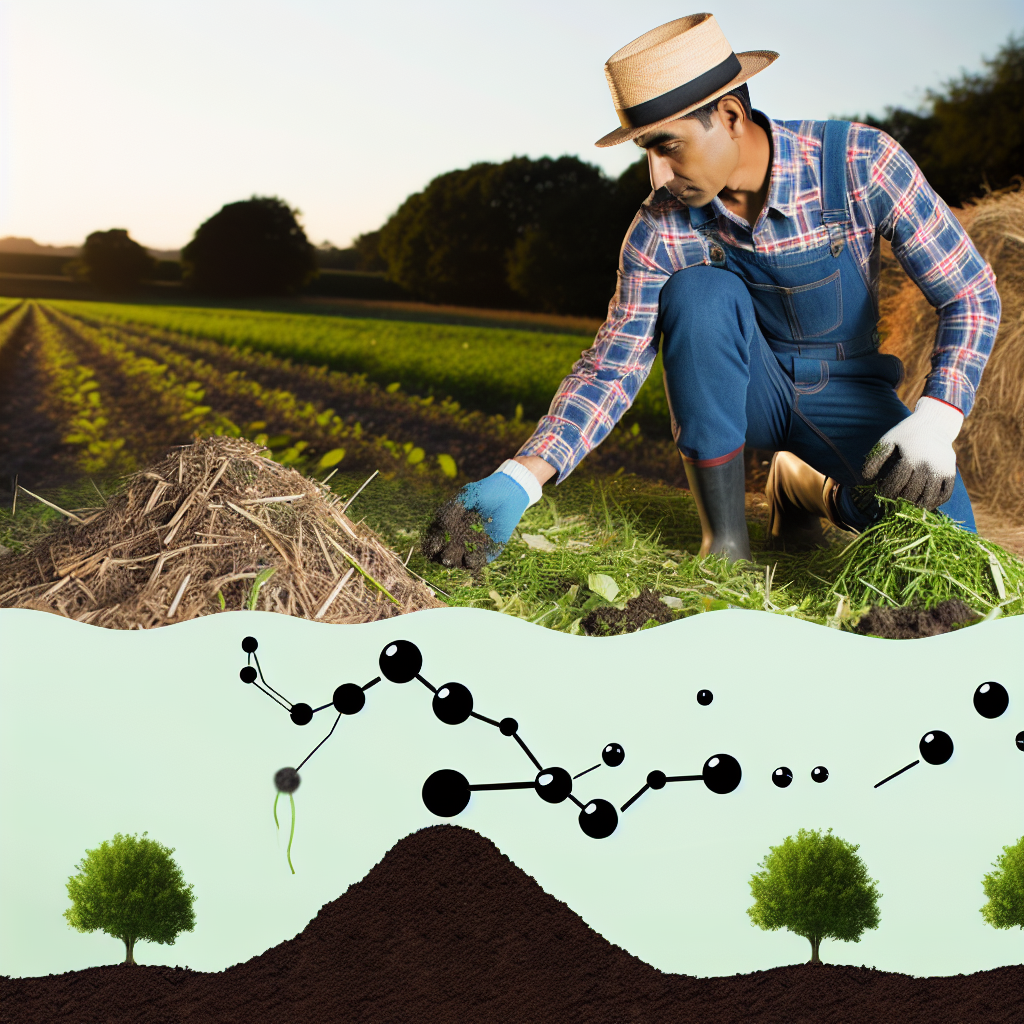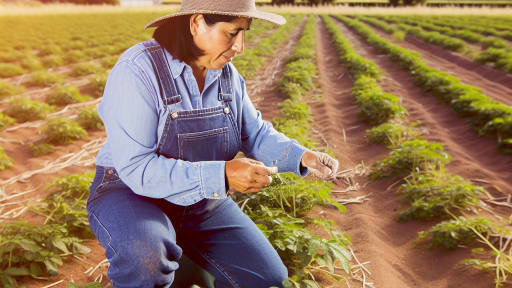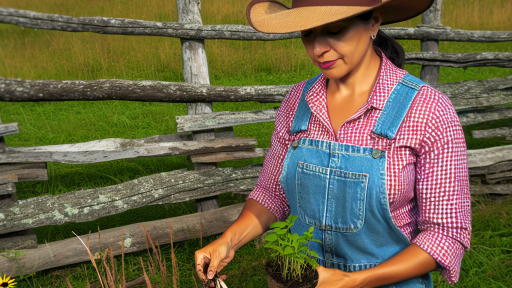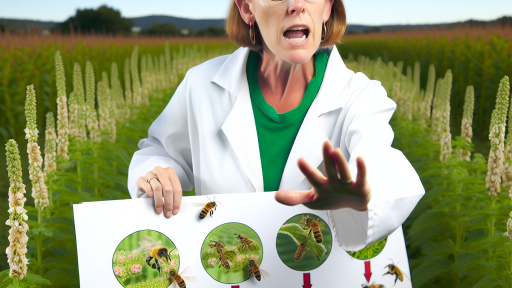Introduction to Organic Farming
Core Principles of Organic Farming
Organic farming embraces sustainable agricultural practices.
It focuses on maintaining environmental balance and biodiversity.
Farmers utilize natural methods to promote soil health.
They avoid synthetic fertilizers and pesticides.
This approach respects animal welfare and promotes natural habitats.
Key Practices in Organic Farming
Crop rotation plays a vital role in maintaining soil fertility.
This technique reduces pest buildup in crops.
Natural composting enriches soil with organic matter.
Farmers often integrate livestock into crop rotations.
This method enhances nutrient cycling in the ecosystem.
Importance of Biodiversity
Biodiversity is essential for healthy ecosystems.
Organic farms support a diverse range of species.
This variety helps control pests naturally.
It also improves resilience to climate change.
The Role of Sustainable Practices
Sustainable practices lead to long-term agricultural health.
Transform Your Agribusiness
Unlock your farm's potential with expert advice tailored to your needs. Get actionable steps that drive real results.
Get StartedOrganic farming reduces dependency on non-renewable resources.
This approach promotes regenerative agriculture techniques.
Farmers can enhance carbon sequestration through these methods.
Understanding Carbon Sequestration
Definition of Carbon Sequestration
Carbon sequestration refers to the process of capturing and storing atmospheric carbon dioxide.
It plays a vital role in mitigating climate change.
This process can occur naturally or through human intervention.
Mechanisms of Carbon Sequestration
Carbon sequestration happens through several mechanisms in the environment.
Photosynthesis in plants is one of the primary processes involved.
Trees and crops absorb carbon dioxide as they grow.
Soils also play a significant role by storing carbon through organic matter.
Additionally, oceanic absorption contributes to global carbon sequestration efforts.
Types of Carbon Sequestration
There are two main types of carbon sequestration: natural and artificial.
Natural sequestration occurs through ecosystems, including forests, grasslands, and wetlands.
These areas naturally absorb and store carbon over time.
Artificial sequestration involves technology and human practices.
For instance, technological solutions include carbon capture and storage systems.
Importance of Carbon Sequestration
Carbon sequestration is crucial for reducing greenhouse gas concentrations.
It helps in regulating the Earth’s climate system.
By enhancing carbon storage capabilities, we promote healthier ecosystems.
Furthermore, carbon sequestration supports sustainable agricultural practices.
The Role of Soil Health in Organic Farming and Carbon Capture
Understanding Soil Health
Soil health is vital for successful organic farming.
Healthy soil enhances the ability to capture carbon.
It consists of a balanced mix of minerals, organic matter, and microorganisms.
Additionally, healthy soil improves plant growth and yields.
Showcase Your Farming Business
Publish your professional farming services profile on our blog for a one-time fee of $200 and reach a dedicated audience of farmers and agribusiness owners.
Publish Your ProfileThis fosters a sustainable agricultural environment.
How Organic Farming Practices Improve Soil Health
Organic farming emphasizes the use of natural inputs.
This includes compost, cover crops, and crop rotations.
These practices enrich soil while encouraging beneficial soil microorganisms.
Furthermore, organic methods prevent soil erosion and degradation.
This approach not only boosts health but also builds resilience in soils.
The Mechanism of Carbon Sequestration
Carbon sequestration occurs through organic matter accumulation.
Plants capture atmospheric carbon dioxide during photosynthesis.
As they die, their organic material gets decomposed in the soil.
This process locks away carbon in stable forms.
Consequently, healthy soils can store significant amounts of carbon.
Benefits of Carbon Sequestration in Organic Farming
Carbon sequestration mitigates climate change effects.
It enhances soil fertility and supports agricultural productivity.
Moreover, sequestering carbon helps improve water retention in soils.
This leads to reduced irrigation needs and less water wastage.
Case Studies of Successful Implementation
Various farms showcase successful integration of carbon capture.
For example, Green Valley Farms in California employs cover cropping.
This has led to a measurable increase in soil carbon levels.
Additionally, Sunny Meadows uses diverse crop rotations to enhance soil health.
The results show remarkable improvements in yield and soil vitality.
Explore Further: Implementing Recycling Systems on Your Farm
Benefits of Organic Farming for Carbon Sequestration
Enhancing Soil Health
Organic farming enriches soil health significantly.
It promotes the presence of organic matter.
This organic matter captures carbon from the atmosphere.
Moreover, healthy soil increases moisture retention.
As a result, it enhances crop resilience during dry periods.
Reducing Carbon Emissions
Organic practices often utilize fewer synthetic inputs.
This reduction lowers carbon emissions considerably.
Furthermore, organic farming relies on crop rotation.
This technique helps minimize the need for chemical fertilizers.
Consequently, it further decreases carbon footprints.
Promoting Biodiversity
Organic farming encourages a diverse ecosystem.
Diverse systems capture more carbon in various forms.
For instance, diverse plant roots can sequester carbon deeper in the soil.
Additionally, increased biodiversity supports a variety of soil organisms.
These organisms play a vital role in nutrient cycling.
Increasing Carbon Stock
Implementing cover crops is common in organic farming.
These crops improve soil structure and stability.
As a result, they enhance the soil’s carbon storage ability.
Moreover, agroforestry practices add trees to agricultural landscapes.
Showcase Your Farming Business
Publish your professional farming services profile on our blog for a one-time fee of $200 and reach a dedicated audience of farmers and agribusiness owners.
Publish Your ProfileThis practice further increases carbon stocks significantly.
Encouraging Sustainable Practices
Organic farming emphasizes sustainable land management.
This approach reduces soil erosion and degradation.
It maintains the land’s natural carbon sinks effectively.
Also, organic methods often incorporate permaculture principles.
These principles enhance the land’s carbon sequestering potential.
Uncover the Details: Innovative Practices for Carbon Sequestration in Farming
Comparative Analysis: Organic Farming vs. Conventional Farming in Carbon Sequestration
Overview of Carbon Sequestration
Carbon sequestration refers to the process of capturing and storing atmospheric carbon dioxide.
This practice reduces the amount of CO2 in the atmosphere.
It plays an essential role in mitigating climate change effects.
Farming methods significantly influence the efficiency of carbon sequestration.
Organic Farming Practices
Organic farming emphasizes natural processes and materials.
This method enhances soil health and biodiversity.
It avoids synthetic fertilizers and pesticides, promoting ecological balance.
These practices contribute positively to carbon sequestration.
Soil Health Improvement
Organic farming enriches soil organic matter significantly.
Healthy soil stores more carbon effectively.
Additionally, earthworms and microorganisms thrive in organic soils.
These organisms absorb and sequester carbon from the atmosphere.
Crop Diversity
Crop rotation and polyculture are hallmarks of organic farming.
These strategies enhance soil fertility and reduce pests.
Furthermore, diverse crops capture more carbon throughout their growth cycles.
Conventional Farming Practices
Conventional farming relies heavily on synthetic inputs.
This method often leads to soil degradation over time.
Consequently, degraded soils have lower carbon storage potential.
Conventional practices typically favor monoculture systems as well.
Use of Chemical Fertilizers
Chemical fertilizers provide immediate nutrients to crops.
However, they often disrupt soil microbial communities.
Such disruptions lead to a loss of organic matter and carbon.
Soil Tillage Impact
Frequent tillage in conventional farming exposes soil carbon to the atmosphere.
This process accelerates carbon oxidation and release.
Tillage also increases soil erosion, further diminishing carbon stocks.
Comparative Carbon Sequestration Potential
Research indicates organic farms sequester more carbon than conventional farms.
Several studies support this finding through comparative analysis.
On average, organic systems can increase carbon content in soils by 30%.
This difference stems from improved soil health practices in organic systems.
Long-term Sustainability
Organic farming promotes long-term soil health and stability.
Therefore, it sustains higher carbon sequestration rates over time.
In contrast, conventional farming depletes soil health gradually.
This depletion ultimately reduces carbon capture efficiency.
Showcase Your Farming Business
Publish your professional farming services profile on our blog for a one-time fee of $200 and reach a dedicated audience of farmers and agribusiness owners.
Publish Your ProfileYou Might Also Like: Carbon Sequestration Practices for Sustainable Farms

Case Studies of Successful Organic Farms Implementing Carbon Sequestration Strategies
Sunny Acres Organic Farm
Sunny Acres has integrated cover cropping into its farming practices.
This method enhances soil health while capturing carbon from the atmosphere.
As a result, their organic strawberries show impressive growth and yield.
Moreover, the farm reports a significant increase in soil organic matter.
Green Fields Agroecology
Green Fields utilizes agroforestry to enhance carbon sequestration.
The combination of trees and crops promotes biodiversity on the farm.
Additionally, it provides vital habitat for local wildlife.
Farmers at Green Fields notice improved water retention in the soil.
Harvest Moon Farm
Harvest Moon has adopted rotational grazing techniques for their livestock.
This practice helps to maintain healthy pastures and reduces soil erosion.
Consequently, it enhances soil carbon storage in their grazing lands.
The farm also reports increased resilience to drought conditions.
Earthwise Collective
Earthwise Collective employs no-till farming methods on their fields.
This approach minimizes soil disturbance and enhances carbon capture.
They observe improved microbial activity in the soil as well.
This contributes to fertile, thriving crop systems year after year.
Discover More: Sustainable Farming Practices Boosting Biodiversity
Challenges in Implementing Carbon Sequestration in Organic Farming
Understanding the Requirements
Implementing carbon sequestration in organic farming requires a deep understanding of ecological processes.
Farmers need knowledge about soil biology and chemistry.
Additionally, they must align sequestering practices with organic regulations.
Costs and Economic Viability
The financial aspects pose significant challenges.
Initial investments in equipment and training can be high.
Many farmers fear the return on investment may take too long.
Furthermore, market access for carbon credits is often limited.
Climate Variability
Climate change introduces uncertainty in farming practices.
Weather patterns are increasingly unpredictable.
These shifts can impact crop yields and soil health.
As a result, farmers face challenges in maintaining effective sequestration practices.
Technical Expertise and Training
Farmers often lack access to the necessary training.
Understanding complex soil management strategies is essential.
Without proper education, implementing effective practices becomes challenging.
Policy and Regulatory Barriers
Government policies may hinder the adoption of carbon sequestration practices.
Inconsistent regulations across regions create confusion.
Moreover, incentive programs may not adequately support organic farmers.
Cultural Perceptions and Awareness
Public perception significantly affects organic farmers.
There may be a lack of awareness about the benefits of practices.
Farmers advocate for education to improve understanding of carbon sequestration.
Integration of Practices
Sequestering carbon requires integration with existing farming practices.
This integration can be complex and time-consuming.
Showcase Your Farming Business
Publish your professional farming services profile on our blog for a one-time fee of $200 and reach a dedicated audience of farmers and agribusiness owners.
Publish Your ProfileFarmers need time and resources to test new methods successfully.
Future Perspectives: Innovations in Organic Farming for Enhanced Carbon Sequestration
Introduction to Innovations
Innovations in organic farming are crucial for enhancing carbon sequestration.
These advancements can significantly reduce greenhouse gas emissions.
Furthermore, they can improve soil health and agricultural productivity.
Soil Health Management
Healthy soil is vital for effective carbon sequestration.
This can be achieved through various sustainable practices.
- Crop rotation helps maintain soil fertility.
- Cover cropping minimizes soil erosion.
- Composting adds organic matter to the soil.
Agroforestry Systems
Agroforestry integrates trees into farming systems.
This technique increases carbon capture significantly.
Moreover, it enhances biodiversity on farms.
- Trees provide habitats for various species.
- They also improve microclimates for crops.
- Agroforestry reduces the need for synthetic fertilizers.
Precision Agriculture Technology
Precision agriculture optimizes inputs for better outputs.
Using technology allows farmers to monitor soil and crop health accurately.
This efficiency leads to lower greenhouse gas emissions.
- Drone technology can assess crop conditions.
- Soil sensors provide real-time data on nutrient levels.
- Data analytics help in making informed decisions.
Community and Education Initiatives
Community involvement is key to promoting organic farming.
Educational programs teach sustainable practices to new farmers.
Additionally, workshops can showcase innovative techniques.
- Farmers can share their experiences and success stories.
- Collaboration fosters knowledge exchange among peers.
- Networking encourages adoption of practices that enhance sequestration.
Collaboration with Research Institutions
Collaborating with research institutions drives innovation.
These partnerships can lead to new findings in sustainable practices.
Research helps identify effective methods for carbon capture.
- Field studies can validate the effectiveness of new techniques.
- Grants can support projects focused on organic farming advancements.
- Institutions can provide valuable resources and expertise.
Policy Support for Organic Farmers
Government policies can significantly impact organic farming practices.
Supportive policies encourage the adoption of carbon sequestration methods.
Incentives can motivate farmers to embrace sustainable innovations.
- Tax breaks can lessen financial burdens for organic practices.
- Subsidies for eco-friendly technologies enhance adoption rates.
- Education grants can facilitate farmer training programs.
Additional Resources
Climate-Smart Agriculture and Forestry Resources | Farmers.gov




